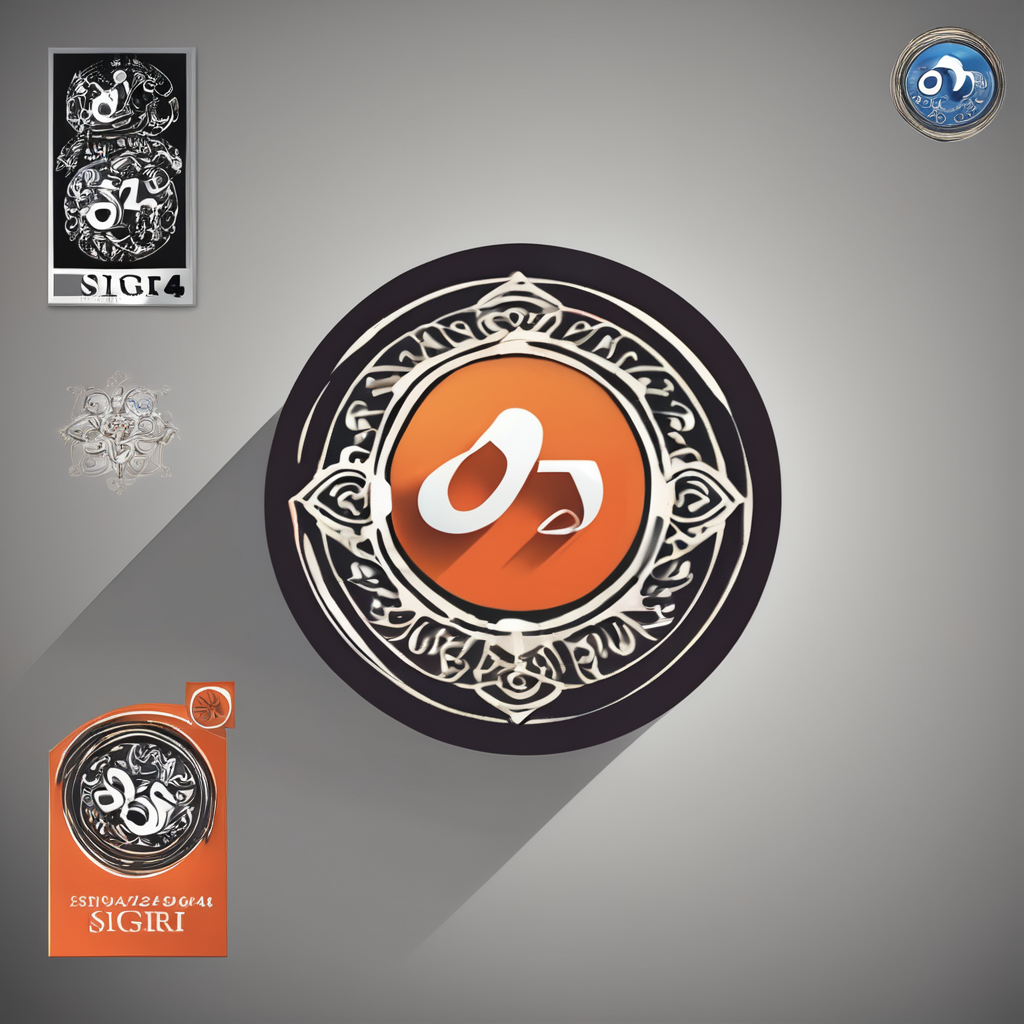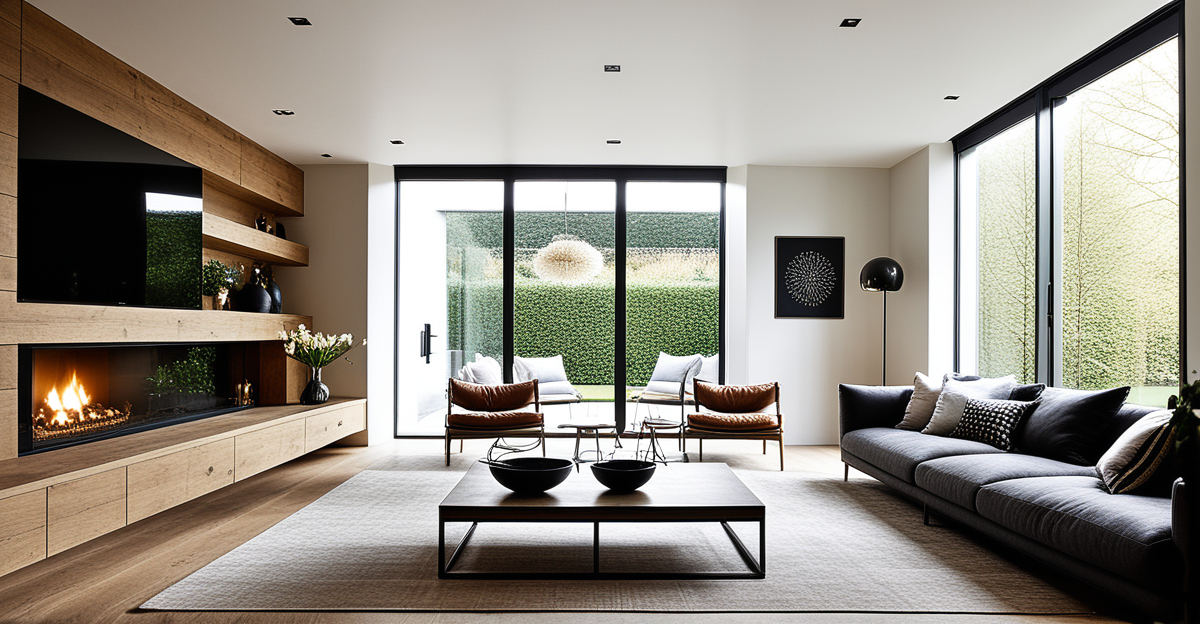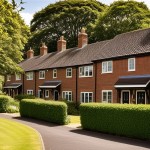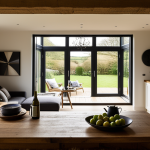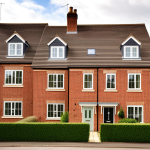Overview of Current Interior Design Trends in the UK
The landscape of current interior design trends in the UK is dynamic and ever-evolving, driven by cultural and societal influences. Staying updated with these trends is essential for both homeowners and designers, as it enables them to create spaces that resonate with modern aesthetics and functional needs. Popular styles in the UK are characterized by a blend of tradition and innovation, each telling a story through interior design inspiration that reflects the country’s rich heritage and forward-thinking perspective.
Understanding these trends goes beyond aesthetics; it is about aligning with the current cultural zeitgeist. For instance, a move towards sustainability is shaping the way materials and finishes are chosen, reflecting a societal push towards more eco-conscious living. Meanwhile, trends like open-plan living spaces and the incorporation of smart technology are indicative of changes in lifestyle preferences, where versatility and connectivity are key.
Also read : How Can You Transform Your UK Home into a Zen Retreat?
As we explore these popular styles, it’s important to note how they mirror broader changes within society. Whether it’s the embrace of minimalist design for its simplicity or the surge in biophilic design which connects people with nature, each trend offers unique insights into today’s evolving interior design scene. These insights are invaluable for anyone seeking to craft a space that is not only trendy but also meaningful and harmonious with the pace and values of contemporary life.
Biophilic Design
In recent years, biophilic design has surged in popularity, reflecting a growing appreciation for nature-inspired interiors that seamlessly integrate the calming essence of the natural world into indoor spaces. At its core, this design philosophy centres around the human craving for connection with nature, capitalizing on natural light, organic materials, and lush greenery to craft environments that foster serenity and well-being.
Additional reading : How Can UK Homeowners Efficiently Maximize Indoor Space?
The benefits of biophilic design are both aesthetic and practical. Nature-inspired interiors are not just visually appealing but also enhance mental health by reducing stress and promoting a sense of peace. Studies show that incorporating elements such as indoor plants and natural textures can boost creativity and concentration levels, making biophilic spaces ideal for homes and offices alike.
To implement biophilic elements effectively, consider adding large windows or skylights to invite more natural light. Incorporate materials like wood, stone, and water features to evoke outdoor environments. Furthermore, strategically placing a variety of indoor plants can enliven your space, improve air quality, and foster a profound connection with nature, thereby supporting overall well-being.
Minimalism
The essence of minimalist design lies in its celebration of simplicity and functionality. Rooted in the “less is more” philosophy, this style embraces clean lines, open spaces, and a limited colour palette to create serene environments. What truly defines minimalism is its commitment to reducing clutter and focusing on essential elements, offering a canvas where elegance is found in restraint.
Historically, minimalism emerged as a reaction to the cluttered eclecticism of the early 20th century. Influenced by the Bauhaus movement and Japanese Zen principles, it evolved into a sophisticated approach prioritizing clarity and purity. Its enduring appeal lies in its ability to adapt to modern living, providing a tranquil refuge amidst urban chaos.
To incorporate minimalist principles into your home, start by decluttering your space and selecting furnishings that offer optimal functionality without excess ornamentation. Opt for neutral tones and use natural light to enhance openness. Carefully choose quality over quantity—each piece should serve a purpose, whether functional or aesthetic, creating a harmonious balance that’s calming and inviting.
Mid-Century Modern
The timeless appeal of mid-century modern style continues to captivate homeowners and designers alike, celebrated for its unique blend of elegance and simplicity. Characterized by clean lines, functional form, and an affinity for both natural and man-made materials, this retro design aesthetic originated in the mid-20th century and remains influential in today’s interior landscapes. The enduring charm of iconic furniture pieces from this era, such as the Eames Lounge Chair, reflects a commitment to craftsmanship and innovation.
Key historical figures like Charles and Ray Eames, George Nelson, and their contemporaries pioneered movements that embraced minimal ornamentation and functionality. These designers sought to create spaces that were not only visually appealing but also adaptable to modern living. Their influence endures in the popularity of open-plan layouts and the integration of indoor and outdoor spaces, both hallmarks of this design style.
To achieve a mid-century modern look today, consider incorporating elements like tapered legs, geometric shapes, and neutral color palettes accented with bold hues. Statement lighting, such as a Sputnik chandelier, can serve as a focal point, while incorporating vintage pieces or replicas can seamlessly infuse authenticity into your decor. By selecting furniture and decor with purpose, your space can pay homage to a bygone era while remaining fresh and relevant.
Industrial Style
Industrial design has emerged as a distinct aesthetic, celebrated for its raw and hard-wearing elements. This style pays homage to the functionality and practicality of urban architecture, drawing inspiration from old factories and industrial spaces. Exposed brick walls, metal finishes, and wooden beams are quintessential features of this design approach, creating a rugged yet sophisticated look.
The historical roots of industrial style can be traced back to the late 19th and early 20th centuries, during the rise of the Industrial Revolution. The movement gained popularity when vacant warehouses and industrial spaces were converted into living areas by artists in urban settings, blending utility with unique stylistic elements.
To integrate industrial style into your home, start with a neutral color palette accentuated with stark contrasts such as black or dark metals. Consider using materials like steel, iron, and reclaimed wood to achieve an authentically rugged texture. Mixing these elements with contemporary furniture can soften the aesthetic, offering a balanced interplay between urban grittiness and modern elegance. By adding vintage fixtures or open-style shelving, you can intricately combine this aesthetic with other design themes for a personalized touch.
Scandinavian Design
Scandinavian design, synonymous with cozy interiors and functional design, stands out with its emphasis on simplicity and functionality. This style embodies minimalism, but with a warm and inviting twist. Known for its crisp, clean lines, it integrates elements that promote a sense of peace and serenity in home environments, making it a timeless choice. Natural materials play a pivotal role, with wood, wool, and leather often taking center stage. These materials, combined with a careful selection of textiles, contribute to a harmonious and soothing atmosphere.
The charm of Scandinavian style lies in its use of light to create airy and spacious interiors. Large windows are a common feature, allowing for an abundance of natural light, which is crucial in the often dark northern landscapes. This approach not only enhances visual aesthetics but also contributes to a healthier indoor environment. Neutral color palettes dominate, with whites, greys, and muted tones providing a backdrop that highlights simplicity while allowing personalized decor to shine.
To create a Scandinavian-inspired space, focus on selecting furniture that balances form and function. Look for pieces with sleek designs and practical uses. Incorporate cozy elements like textured blankets and soft cushions to add warmth. Introduce greenery with easy-to-care-for plants, reinforcing the connection to nature. By embracing these principles, you can achieve a space that is both stylish and comforting, and that celebrates the essence of Scandinavian design.
Eclectic Style
In a world where personal expression is paramount, eclectic decor emerges as a bold style that celebrates individuality and creativity. Unlike more rigid interior styles, eclectic interiors thrive on a mix of styles, combining elements from various periods and aesthetics to create a unique, personalized feel. This approach allows for an interior space that tells a story, reflecting the diverse influences and tastes of those who inhabit it.
Creating an eclectic space involves a delicate balance. The key is to blend different design elements without losing coherence, ensuring that the overall look remains harmonious. To achieve this, consider starting with a neutral backdrop to unify disparate pieces. From there, layer in an array of textures and patterns, such as a plush velvet sofa paired with a vintage rug. Incorporate statement pieces and diverse artwork to infuse character and depth.
Successful eclectic interiors often showcase a curated art collection or a selection of treasured items that hold personal significance. These can range from antique finds to cutting-edge contemporary pieces. To maintain unity amid diversity, establish a consistent color palette or repeated design motifs throughout the space. Ultimately, the eclectic style provides endless opportunities for creative expression, making each home as unique as its inhabitants.
Conclusion of the Design Styles Overview
The exploration of trending interior design styles has highlighted the importance of staying informed about evolving aesthetics and cultural shifts. Each style, from minimalist and biophilic to mid-century modern and industrial, offers distinct insights into creating meaningful, personalized interiors. As homeowners and designers, it becomes crucial to embrace these popular styles in the UK, adapting them to individual tastes and functional requirements.
Whether you prefer the clean lines of minimalist design or the nature-inspired elements of biophilic design, the key lies in harmoniously integrating these styles into your living spaces. The rich tapestry of interior design inspiration encourages a blend of tradition and innovation, allowing for diverse expressions of style that resonate with your unique preferences.
As you embark on your interior design journey, consider using this overview as a foundation for experimenting and discovering what resonates most with your lifestyle and values. The culmination of these insights sets the stage for exciting transformations in your home, creating environments that are both stylish and reflective of personal expression.
